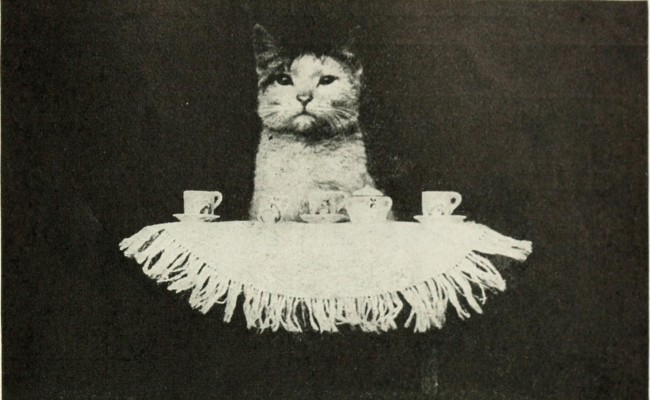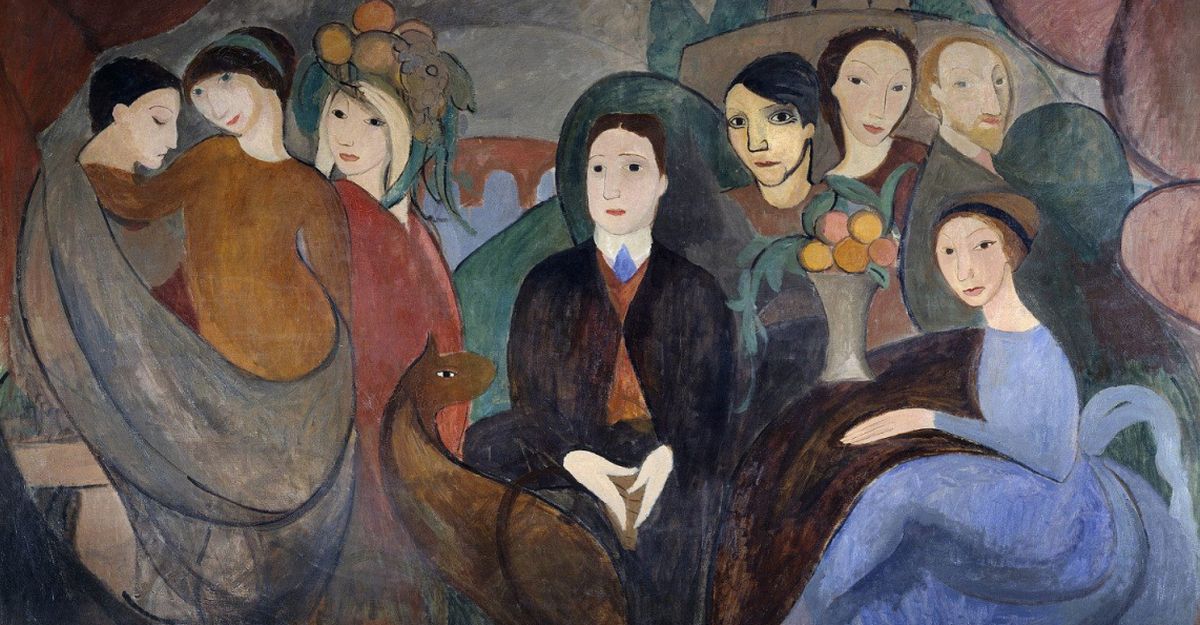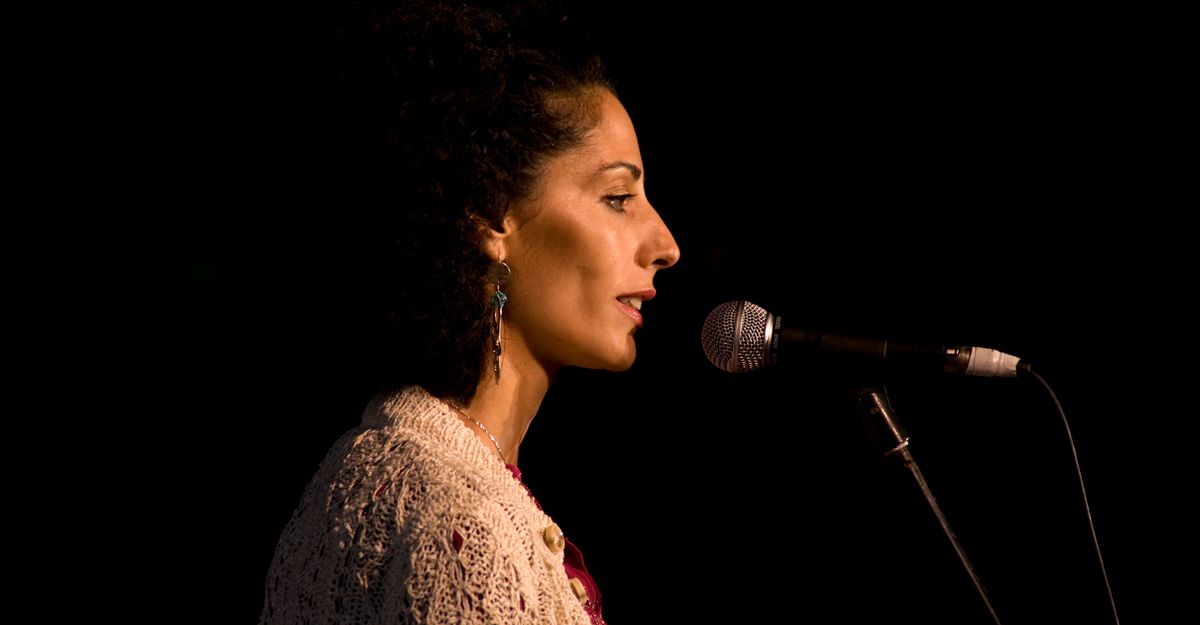Most everyone in Australia’s small literary scene has heard the grumbling about Luke Carman’s essay, ‘Getting Square in a Jerking Circle’ in the new Meanjin. One thing is certain: the response has been overwhelmingly negative and – even given the fact that Carman’s essay is inflammatory and provocative – surprisingly hostile. On Twitter, authors and reviewers I respect were calling it ‘a waffly cowardly piece of shit’ and ‘a pretty small minded way to think about art’. Three critical replies quickly appeared from writer Jessica Friedmann, Ellena Savage at the The Lifted Brow, and Ben Eltham at The Guardian.
For all the anger directed at it, though, most readers seem to find Carman’s essay confusing. In Friedmann’s reply, she states that ‘I won’t recapitulate Carman’s arguments, because frankly I don’t understand them’ – but surely it is uncontroversial that understanding needs to precede the act of criticism? Regardless, those who want to lambast the piece for its obtuseness seem unaware of the double-bind such a charge creates: if you couldn’t understand it, then it doesn’t make sense to be angry about it. And if you are angry about it, it probably wasn’t that obtuse.
Others have claimed Carman is just a resentful, aspirant writer venting because he has not been sufficiently recognised in the literary world – a critique Oscar Wilde lampooned in The Importance of Being Earnest, when Lady Bracknell says, ‘Never speak disrespectfully of Society, Algernon. Only people who can’t get into it do that.’ Yet Carman takes pains to describe his essay as ‘an insider’s account of the state of Australia’s so-called “writing culture”’ and elsewhere notes that ‘I’ve had the strange pleasure of being surrounded by some of our culture’s most celebrated writers, critics and editors. It’s not difficult to do so. The pond is small and the fish are big.’ Rather than being an irate and excluded outsider, Carman both sees himself as inside and disputes the notion that the literary world is particularly exclusive (‘It’s not difficult to do so’).
With the exception of Ellena Savage’s piece, very little of the online discussion has tried to find out what Carman might have been trying to do. Worse still, virtually no-one seems to have considered the rhetoric of Carman’s essay (particularly its heavy use of irony and hyperbole) or its deployment of a traditional genre – the jeremiad – whose central features are the use of bitter invective directed at widespread targets and an apocalyptic tone. The failure to note any of these things is a quod erat demonstrandum of Carman’s claim that literary culture is ‘obsessed with the “cultural now” and traffic[s] in fashionable opinions’ rather than caring about actual literary works, qualities, or arguments. Every half-baked tweet, off-the-cuff Facebook post, or socially mediatised opinion piece (like the very one I have written here) further tightens the noose.
It’s easy to dismiss Carman in a Grub Street opinion piece. Understanding it, though, seems to be either too hard or not worth the effort.
From my perspective, there’s plenty that could be argued with in it, and I am also fine with people deciding that rhetorically charged essays are not their cup of tea. But if you want to complain about it, I think you need to try to understand what it’s doing first. I will also note this: I have never met Carman or corresponded with him. I have never seen him except briefly in a YouTube clip. I haven’t even read his book – which got placed in a ‘to read’ pile between the births of my two children and has languished there until today. But I can use the internet and read an essay (perhaps more than once!) and between the two I have cobbled together some sense of what he’s on about and why. At the risk of offering a second-rate and less-than-comprehensive SparkNotes, let me share some of these not very hard-won insights.
For one, Carman is not just some run-of-the-mill outsider upset about his literary status. He has, from the outset, identified as a Western Sydney writer and was a co-founder and former associate director of the SWEATSHOP collective, whose aims Carman describes in an interview:
The collective is made up of artists from marginalised communities across Western Sydney, and we’ve found that the only way to develop in the face of a colossal indifference toward the sort of stories we want to tell is to be critically armed at all times. . . . the overwhelming majority of our energy as a collective goes on working with the outside world, with our local communities, particularly in local schools and universities. Our movement is all about creating a sustained creative and critical culture for the region.
Moreover, if you read online interviews with and essays by Carman, he routinely names and praises writers such as Maxine Beneba Clarke, Lachlan Brown, Omar Musa, Ellen Van Neerven, Peter Polites, and Michael Mohammed Ahmad – all writers who discuss the experiences of marginalised or underrepresented communities.
No-one has mentioned this, but it’s clear that Carman’s critique is not about personal fame but motivated by broader political positions. Indeed, his essay is reasonably clear in identifying his politics:
It speaks to the degraded state of our literary life that those within it assume any position that does not endorse their consensus about culture must be arguing for a reactionary, George Brandis sort of high-minded excellence. That someone might have in their mind an “underclass” rather than an elite when they consider the status quo simply does not occur to them.
As this passage suggests, Carman’s critique comes from a left-wing and, indeed, ‘underclass’ perspective. Understanding this makes clearer the general target of his screed.
What is that target? Well, in one sense it is exceptionally clear: he identifies a class of ‘anti-artists’ made up of arts administrators whose goal is to take up ‘positions on funding panels and advisory boards . . . and make meaningful decisions about what will and what will not be in our nation’s language’. These figures are anti-artists insofar as they view art as ‘a means to power’ rather than an end in itself. According to Carman, these anti-artists are everywhere, but achieve their highest concentration in Melbourne around the Wheeler Centre for Books, Writing, and Ideas.
For Carman, these figures – who are pretty clearly middle-class people, by the way – are problematic because they set national arts agendas, frame debates, and distribute funding, but have no interest in art or its inherent qualities. Rather, they have a shallow relation to cultural fashion, and privilege commenting on such fashions (‘all they possess is opinions [sic]’) over engaging with artistic forms, traditions, or works. Put another way, for Carman, these anti-artists are people who want middle-class comforts and an artistic lifestyle, but are not all that interested in art itself.
Part of the essay’s difficulty, though, is that Carman doesn’t stop here. Instead of offering a level-headed analysis, or even empirical proof of his claims, he ratchets up the rhetoric into invective, describing these figures as ‘vampires’, ‘goons’, ‘mobsters’ and so forth. He also – having identified these anti-artists – moves on to other targets (creative writing teachers, middlebrow novelists), another common generic feature of the jeremiad. The effect produced by both aesthetic choices is hyperbole – which is to say exaggeration for the sake of emphasis. Indeed, one need only turn to the very first page of Carman’s An Elegant Young Man to see that hyperbole is an important part of his style:
I’m pretty much alone in this stance but I don’t reckon there should be any such thing as a heritage listing. I say all those old buildings are just taking up space that a block of units could fit into. I’m serious. Take everyone’s backyards away while you’re at it. No fooling. I’m not afraid of overcrowding. I wanna see people crushed in together like chunks of fish in a tuna can.
The extended series of overstatements (like those in Carman’s essay) increase their intensity in a way that literally reaffirms but figuratively undermines his point. Is the narrator here (also named Luke Carman) being serious about getting rid of backyards? He says he is, but the extremity of the rant threatens to push it over into caricature. Carman’s aesthetic, at least in the tiny sample I have read, seems to dance on this knife-edge between earnest assertion and self-parodying excess.
But Carman nods to this already in the essay, when he says, ‘I might as well pre-empt accusations of Mark Latham levels of bilious, cuckoo filibuster and borrow Holden Caulfield’s refrain: these people are phoneys.’ In invoking Latham, Carman actually underscores the extremity of his rant, and the reference to Caulfield strikes me as a note that is at least half-ironic (given Caulfield’s basically adolescent view of the world). Elsewhere, the essay employs heavy doses of irony such that his direct relation to other authors and ideas is unclear. Does he respect Antonia Hayes’ critique of Beth Driscoll or not? Does he like Ivor Indyk’s essay on literary prizes? Is he praising James Tierney or critiquing him? There are answers to these questions (respectively: not really, mostly, and both) but, due to Carman’s ironic and bitter tone, the reader has to work hard to clarify these relationships. The effect is destabilising – to throw the reader off balance. The essay announces these gestures in its opening discussion of Gore Vidal’s dichotomy of writers (which for Vidal was itself a joking-but-serious provocation), which introduces a phantasmagoric overtone to Carman’s dichotomy of artists and anti-artists.
This – or so it seems to me – is the style of the essay which is both sincere and hyperbolic, which says what it means and in doing so goes too far, aims for a specific target and ends up attacking everything around it. Rather than resolving these contradictions, the essay seeks to exploit them for a variety of effects.
Why do all of this? Well, for one, Carman notes that ‘diatribes’ are ‘acts of culture’, a point that, or so it seems to me, he seeks to prove by writing a diatribe with the same rhetorical techniques he might apply to fiction. Second, Carman has spent much of the essay attacking the easy opining and cultural journalism of anti-artists; here, the complex rhetoric of his diatribe – which seeks to be self-consciously literary – serves as formal riposte to such commentary. Third, Carman notes the pervasiveness of the cultural cringe, and his essay’s penchant for extremity and hyperbole strikes me as a way of overcoming (what he sees as) Australian timidity by bulldozing through the boundaries of acceptable behaviour.
Finally, Carman’s style is provocative and inflammatory. This is clearly no accident, nor is it just trolling, as some have argued. But there is another important effect of this, too: the essay is more or less a critique of a managerial, middle-class that Carman sees as running the arts in Australia. The essay’s lack of decorum – its refusal to abide by the rules of politeness – is an open challenge to middle-class professionalism, which, according to Carman, is the anti-artist’s natural mode of being. If the essay’s rhetoric has a patrician character (an association Carman explicitly rejects), its coarse and perhaps even vulgar bearing is a working-class retort to a middle-class arts bureaucracy. It’s the literary equivalent of giving your boss the finger.
Carman does not want nice middle-class managers to make more room for marginalised artists – and, indeed, he is scornful of writers who allow aspects of their identity to be used as PR tools for festivals and the like. Rather, his is an invitation for people to behave badly. He argues that the crisis in arts funding ironically provides an opportunity for creative anarchy:
Right now the gatekeepers are off their game, and there’s never been a better time to burst out of the confines they have imposed and make your way in this strange little world, being as strange as you like in the process.
Carman’s point here is not simply to revel in the potential joblessness of arts administrators (though there’s a bit of that, too), but to suggest that an insecure arts bureaucracy leaves more room to operate outside of the professionalised, middle-class norms such bureaucracies instil. For all of its hyperbolic rhetoric, the essay is a call for a limited form of underclass literary revolt – and the studied refusal of a creeping professionalisation.
—






